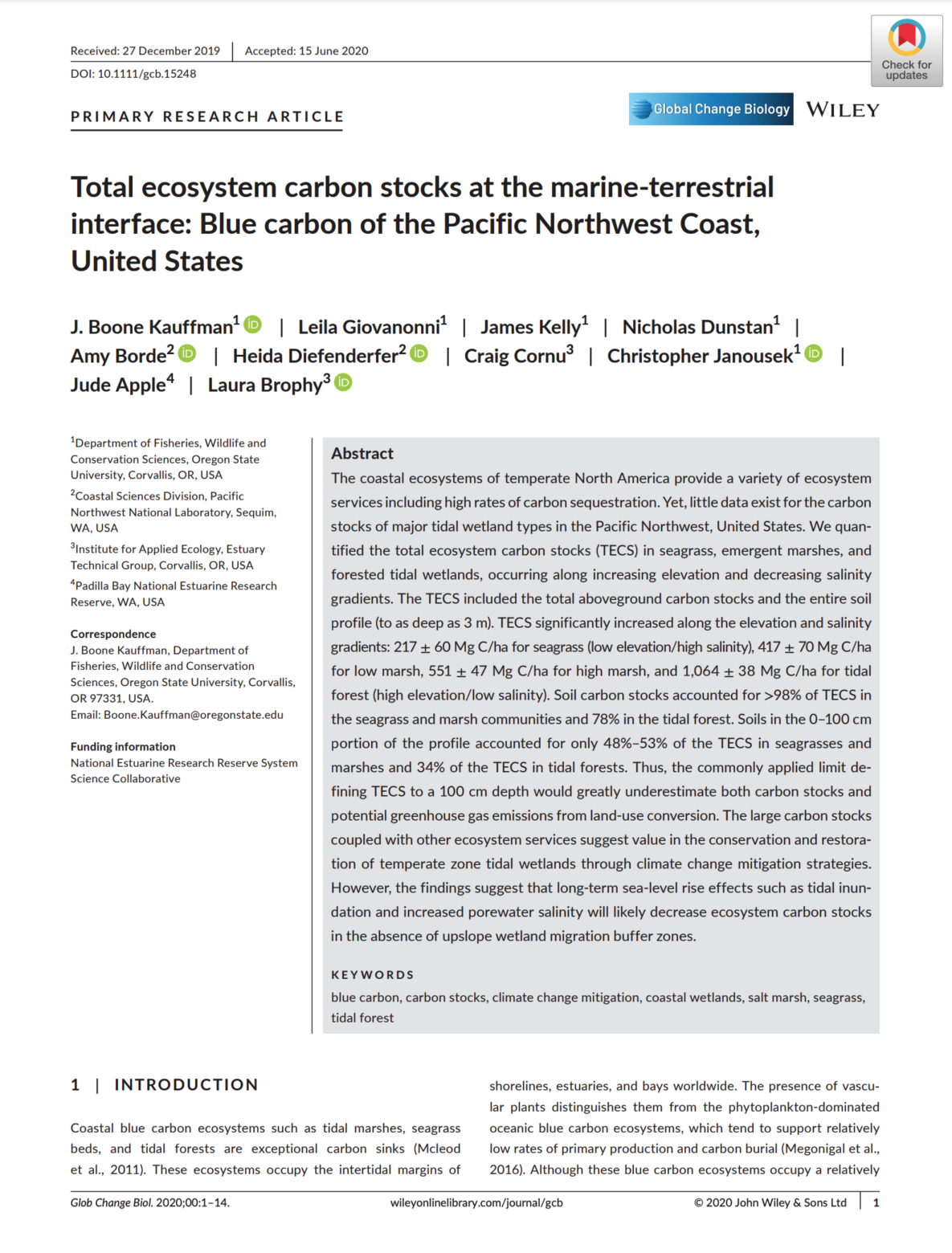
The coastal ecosystems of temperate North America provide a variety of ecosystem services including high rates of carbon sequestration. Yet, little data exist for the carbon stocks of major tidal wetland types in the Pacific Northwest, United States. We quantified the total ecosystem carbon stocks (TECS) in seagrass, emergent marshes, and forested tidal wetlands, occurring along increasing elevation and decreasing salinity gradients. The TECS included the total aboveground carbon stocks and the entire soil profile (to as deep as 3 m). TECS significantly increased along the elevation and salinity gradients: 217 ± 60 Mg C/ha for seagrass (low elevation/high salinity), 417 ± 70 Mg C/ha for low marsh, 551 ± 47 Mg C/ha for high marsh, and 1,064 ± 38 Mg C/ha for tidal forest (high elevation/low salinity). Soil carbon stocks accounted for >98% of TECS in the seagrass and marsh communities and 78% in the tidal forest. Soils in the 0–100 cm portion of the profile accounted for only 48%–53% of the TECS in seagrasses and marshes and 34% of the TECS in tidal forests. Thus, the commonly applied limit defining TECS to a 100 cm depth would greatly underestimate both carbon stocks and potential greenhouse gas emissions from land-use conversion. The large carbon stocks coupled with other ecosystem services suggest value in the conservation and restoration of temperate zone tidal wetlands through climate change mitigation strategies. However, the findings suggest that long-term sea-level rise effects such as tidal inundation and increased porewater salinity will likely decrease ecosystem carbon stocks in the absence of upslope wetland migration buffer zones.
